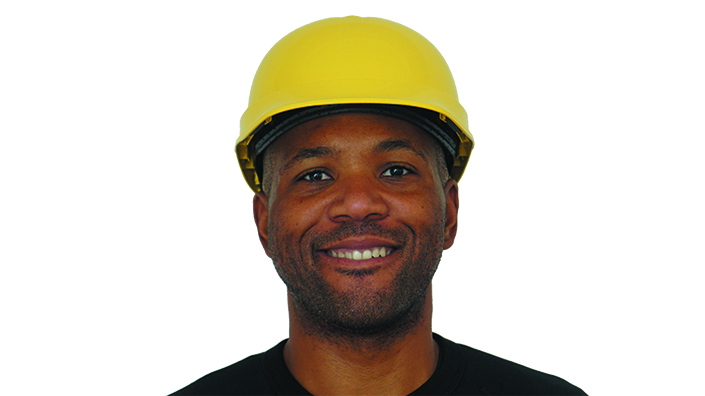Jordan tries the secondary regulator on his scuba suit. It’s broken too, injecting a fine mist of salt water into his lungs. It’s time to escape. Jordan isn’t panicking yet. He’s trained and knows how to surface, following the smallest air bubble up. He signals to the only other diver he can see. I’m going up, he says with his thumb.
But the diver misunderstands and pulls Jordan down by the legs. Jordan grabs the man’s secondary regulator to get the air he needs. He’s got time now. He wishes there was a way for the two of them to speak. For the man to say: “Calm down, everything’s OK, we’re going up to a safety spot, then we’re out of this situation.”
Recovering on a beach in Mozambique, Jordan McRae thinks a lot about what happened. An engineer, he knows the problem he experienced can be solved with technology. He thinks about the fundamental power of a voice. And how people should be able to communicate anywhere, with anyone. Like that air bubble, an idea begins to rise in his mind. An idea that leads Jordan to mobiWAN, an innovative bone-conducting technology that bypasses the ears and puts a voice directly inside a listener’s head.
Feels like magic
Those who use mobiWAN say it feels like magic. But Jordan (38) is no magician. He’s a modern-day inventor who trained at the Massachusetts Institute of Technology (MIT). His journey includes everything from working on top-secret robotic planetary defence projects with Lockheed Martin and NASA to collaborating on digital art projects in Paris. He’s done the Steve Jobs thing, working out of a garage in San Francisco, “prototyping a bunch of cool stuff”. He’s dabbled in renewable wind energy and modular electronic components (landing him on Kickstarter’s hall of fame).
“I’ve always believed you have to do what you love and do what interests you,” says Jordan. “You have to create the freedom you need to be an inventor.”
At school, Jordan wanted to be a marine engineer. He was drawn to the ocean. He wanted to find ways for more people to explore and protect it.

Jordan McRae
To study at MIT and then at Stanford University in California, Jordan mixed scholarships, part-time work and military service. Those were tough years, but they gave him freedom later on.
In 2017, Jordan returned to London and founded Mobilus Labs. The young tech start-up secured funding and recruited a team of engineers and designers to build the mobiWAN headset. Initially, the focus was on turning sound into vibrations and sending that in one direction to a listener’s inner ear. The beauty of the design is that users can communicate clearly at a construction site, an oil rig, or in any noisy location. They can wear ear plugs and still hear each other over the machinery or powerful winds. Most importantly, they can stay safe by being able to communicate.
Upgraded headsets
Jordan’s company built the prototypes, tested the concept and soon became the exclusive audio partner to Trimble’s XR10 HoloLens mixed-reality headsets. Thousands of the first-generation mobiWAN headsets have been sold in more than 20 countries.
Last October, Mobilus Labs launched the next-generation headset, which allows for two-way bone-conducting traffic. The new bit is the microphone, which turns vibrations into voice, before sending it to the listener where the reverse process plays out. This solves the ancient audio problem of isolating a single voice in a loud and chaotic environment, sending a clean digital signal to the receiver.
The upgraded mobiWAN headsets are being tested in all kinds of environments.
“In future, I want all machines to speak the language I speak, in the most natural way, to make it as easy as possible for me to use them as a tool,” Jordan explains. “And voice is one of the most intuitive ways to transfer data.”
No misunderstandings
His focus remains on how technology can become a better part of the human experience.
Jordan’s book of ideas grows, page by page. And he still loves the ocean. Not long ago, he and his fiancée used a prototype bone-conducting device while diving in the Caribbean.
“I pointed out a barracuda and, when she saw it, she was so excited,” Jordan recalls.
“I got to hear what she was thinking. I got to share that moment.”
There were no underwater misunderstandings that day.
Want the best engineering stories delivered straight to your inbox? The Professional Engineering newsletter gives you vital updates on the most cutting-edge engineering and exciting new job opportunities. To sign up, click here.
Content published by Professional Engineering does not necessarily represent the views of the Institution of Mechanical Engineers.